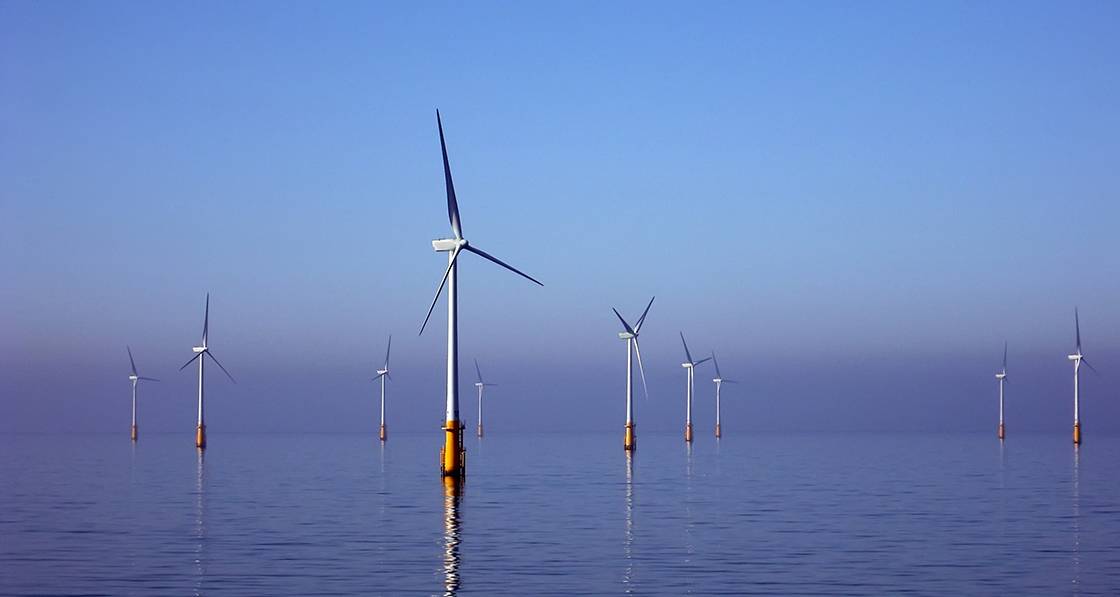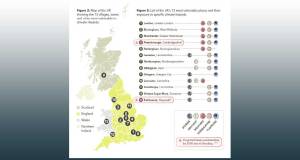
- NZEBs
- Posted
Net zero carbon plans back renewables over fabric
This article was originally published in issue 36 of Passive House Plus magazine. Want immediate access to all back issues and exclusive extra content? Click here to subscribe for as little as €10, or click here to receive the next issue free of charge
In the CCCs sixth carbon budget, the group recommends the government deliver on its promise to upgrade all buildings to an EPC of C over the next ten to 15 years.
It also recommends scaling up the market for heat pumps as a “critical technology for decarbonising space heating” and scaling up the move towards low carbon district heating in urban areas. It also calls for a set of trials on the use of hydrogen as a heating technology.
For domestic properties, it calls for phasing out the installation of high carbon fossil fuel boilers not connected to the gas grid by 2028, and of gas boilers by 2033. There are tighter targets too for public and commercial buildings.
The recommendations envisage all rented and social homes achieving an EPC of C by 2028, while all homes for sale should achieve a C rating by the same date too. All new gas boilers should be “hydrogen-ready” from 2025. The report envisages the insulation of 700,00 lofts a year by 2025, as well as over 200,000 cavity wall and solid wall installations a year from the same date. It calls for a major increase in the uptake of heat pumps, including hybrid hydrogen-fuel heat pumps.
The report was broadly welcomed by groups including RIBA and the UK Green Building Council.
“We welcome the reiteration from the CCC that the government must urgently bring forward a clear and robust definition of the Future Homes Standard. To ensure our new homes do not negatively impact the environment this must include operational energy and embodied carbon targets,” said RIBA president Alan Jones.
The Future Homes Standard is the government’s proposed new build standard, set to come into force in 2023 but as yet undefined. However, the recommendations may disappoint those advocating for retrofit measures that are more likely to close the performance gap deliver in reality, such as to the Enerphit or imminent AECB Retrofit standards, and for an effective and economic balance of fabric-first and low carbon energy sources.
Leading retrofit expert and Passive House Plus columnist Peter Rickaby welcomed the CCC’s overall ambition but said that the bottom of EPC band C was an unambitious target for retrofit, and would “not deliver affordable warmth now, let alone in 2028/2030 when fuel costs will reflect the huge increase in electricity demand arising from the electrification of heat and vehicles. The top of band C (SAP 80) would be a more appropriate target, and would significantly reduce fuel poverty.”
He added: “The intention only to insulate about half of solid walls in dwellings also seems unambitious, but may reflect the realities of insulating safely."
Rickaby said the Department of Business, Energy & Industrial Strategy had been examining whether it is cheaper to invest in offshore wind or energy demand reduction. "The high cost of retrofit compared with the low cost of offshore wind-power seems to have moved their perception of the balance point away from deep retrofit. On the face of it, this may look like a death knell for deep retrofit standards such as passive house Enerphit, but I suspect that there will still be a need for deep retrofit to offset the lower standards of insulation achievable in many older, traditionally constructed and protected buildings."
The CCC report does, however, advocate for a holistic approach to retrofit. It says: “Measures to address thermal efficiency, overheating, indoor air quality and moisture must be considered together when retrofitting or building new homes.”
At an event on 14 December on buildingspecific targets, Jenny Hill of the CCC also said the group supports a whole-house PAS 2035 approach to retrofit.
Techo-fixes
Away from buildings the report recommends a major transition to renewable and low carbon technologies to deliver the goal of net zero. “By the early 2030s all new cars and vans and all boiler replacements in homes and other buildings are low-carbon – largely electric,” it reads.
“UK industry shifts to using renewable electricity or hydrogen instead of fossil fuels, or captures its carbon
emissions, storing them safely under the sea.” The CCC places the emphasis on meeting energy demand through a massive increase in renewables. “Offshore wind becomes the backbone of the whole UK energy system, growing from the Prime Minister’s promised 40GW in 2030 to 100GW or more by 2050,” it reads. “New uses for this clean electricity are found in transport, heating and industry, pushing up electricity demand by a half over the next 15 years, and doubling or even trebling demand by 2050.”
The report follows on the heels of the prime minister’s ten-point plan for a green industrial revolution, published on 18 November. That also placed a major emphasis on clean energy generation and carbon capture rather than on reducing energy consumption.
The first four steps in the plan called for the advancement of offshore wind, hydrogen technology, nuclear power and electric vehicles. This issue of Passive House Plus features a case study of Lark Rise, an all-electric passive house ‘plus’ in Buckinghamshire, that includes an analysis by its architect Justin Bere that challenges reliance on massive offshore wind infrastructure to decarbonise the UK, and instead calls for the deployment of passive houses largely powered by on site renewable energy generation
Related items
-
Tripling EU / UK Energy Efficiency Policy: the NZEB
-
 September’s AECB environmental construction conference seeks to spark debate among industry experts
September’s AECB environmental construction conference seeks to spark debate among industry experts -
 Climate report warns overheating crisis threatens UK
Climate report warns overheating crisis threatens UK -
 Sustainable building leaders crowned at Exemplar Awards
Sustainable building leaders crowned at Exemplar Awards -
 Barratt launches record passive house scheme
Barratt launches record passive house scheme -
 Green homes and finance join forces for growth
Green homes and finance join forces for growth


